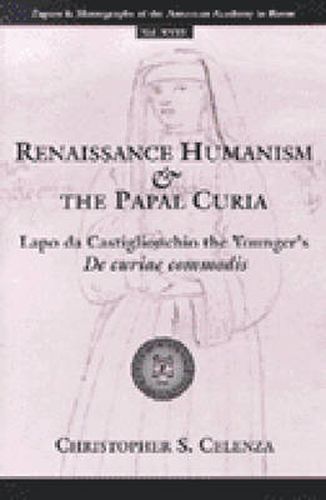Readings Newsletter
Become a Readings Member to make your shopping experience even easier.
Sign in or sign up for free!
You’re not far away from qualifying for FREE standard shipping within Australia
You’ve qualified for FREE standard shipping within Australia
The cart is loading…






Renaissance Humanism and the Papal Curia offers first a general introduction to the life and work of Lapo da Castiglionchio. Then a facing-page translation of and commentary on Lapo’s complicated treatise, De Curiae Commodis, are offered. These illuminate both the text itself as well as Lapo’s own situation and the humanistic era that De Curiae Commodis addresses. Born into a family of the feudal aristocracy in 1406, Lapo da Castiglionchio as an adult was a practitioner of the new art of humanism. A student and friend of noted humanist Francesco Filelfo, Lapo long sought admittance to the powerful circle at the Vatican’s pinnacle. He failed in that goal but left us a document full of valuable details about the workings, goals, and interests of the papal curia. In the year he died, Lapo wrote the treatise De Curiae Commodis. This work is written elegantly, learnedly, and angrily. It is a human document alive with information for intellectual, social, and cultural historians. Christopher S. Celenza is Assistant Professor of History, Michigan State University, and has been elected a Fellow of Harvard University’s Renaissance Study Center in Florence, the Villa I Tatti, for the next academic year (Sept. 1999-June 2000).
$9.00 standard shipping within Australia
FREE standard shipping within Australia for orders over $100.00
Express & International shipping calculated at checkout
Renaissance Humanism and the Papal Curia offers first a general introduction to the life and work of Lapo da Castiglionchio. Then a facing-page translation of and commentary on Lapo’s complicated treatise, De Curiae Commodis, are offered. These illuminate both the text itself as well as Lapo’s own situation and the humanistic era that De Curiae Commodis addresses. Born into a family of the feudal aristocracy in 1406, Lapo da Castiglionchio as an adult was a practitioner of the new art of humanism. A student and friend of noted humanist Francesco Filelfo, Lapo long sought admittance to the powerful circle at the Vatican’s pinnacle. He failed in that goal but left us a document full of valuable details about the workings, goals, and interests of the papal curia. In the year he died, Lapo wrote the treatise De Curiae Commodis. This work is written elegantly, learnedly, and angrily. It is a human document alive with information for intellectual, social, and cultural historians. Christopher S. Celenza is Assistant Professor of History, Michigan State University, and has been elected a Fellow of Harvard University’s Renaissance Study Center in Florence, the Villa I Tatti, for the next academic year (Sept. 1999-June 2000).